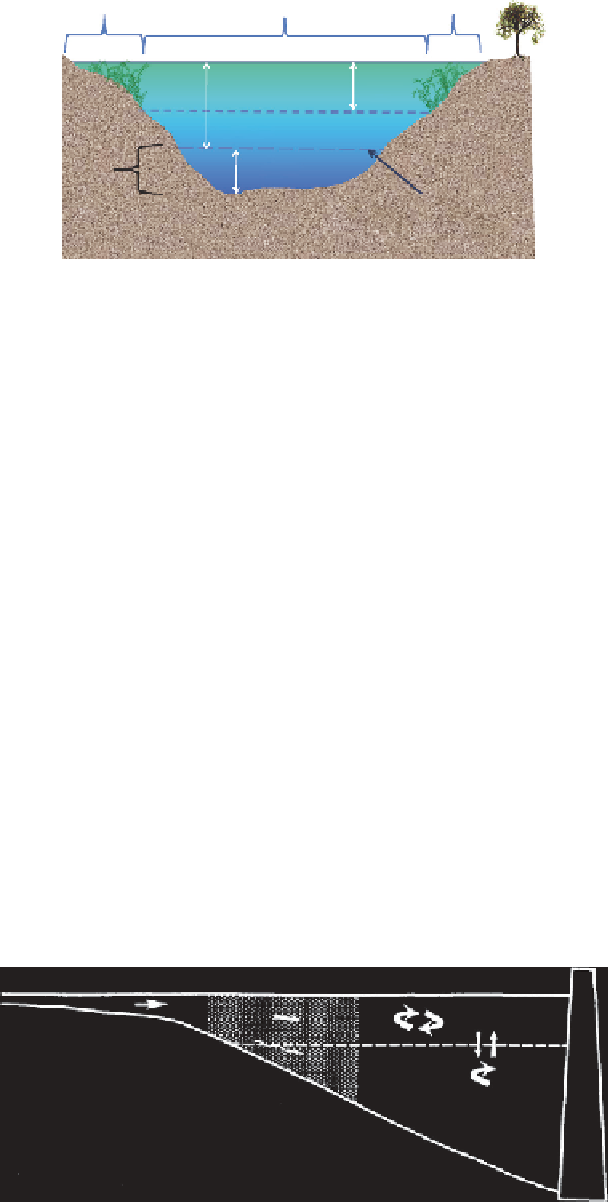Environmental Engineering Reference
In-Depth Information
Littoral zone
Pelagic zone
Littoral zone
Mixed
layer
Photic zone
Aphotic
zone
Profundal
zone
Compensation depth
(photosynthesis
=
respiration)
FIGURE 11.1
Lake zones.
with the season. In reservoirs, the regulation of the depth is part of the management process. For
example, for lood control reservoirs, the water volume (and depth) may be reduced in the spring
and fall in order to accommodate loodwaters. As a result, the location and the extent of the zones
discussed previously will vary.
There are strong longitudinal as well as horizontal and vertical variations in the physical, chemi-
cal, and biological characteristics of reservoirs, particularly those constructed in drowned river
valleys (Figure 11.2).
The riverine zone is dominated by the advective low of a river, and its characteristics are closer
to those of a river than a reservoir (Figure 11.2). This zone is relatively narrow and shallow and has a
shorter water residence time. The riverine zone is characterized by higher levels of suspended solids
and available nutrients, derived from upstream sources or from outside of the reservoir (alloch-
thonous). This zone is usually well mixed and aerobic (Wetzel 2001). High particulate turbidity
commonly reduces light penetration and limits primary production in this zone (Kirk 1985). The
spatial extent of this zone is not constant, but varies with the magnitude of the inlows (Martin and
McCutcheon 1999), so that for high inlow events the zone could extend far into the reservoir.
In the transition zone, the reservoir becomes wider and deeper, as compared to the riverine
zone, and the velocities drop (Wetzel 2001). This is often the most dynamic region of a reservoir
(Kennedy et al. 1985). Suspended solids often settle in this zone and productivity increases as
decreased turbidity results in enhanced light penetration. In this zone, a shift occurs to an increasing
percentage of total organic matter loading from phytoplankton and rooted vascular plants (autoch-
thonous production; Kennedy et al. 1985). In many reservoirs, due to the increased productivity and
enriched bottom sediments, seasonal anoxia begins in this zone (Martin and McCutcheon 1999).
Dam
Riverine
Transition
Lacustrine
River inflow
FIGURE 11.2
Longitudinal zones of a reservoir. (From Thornton, K.W., et al.,
Proceedings of the Symposium
on Surface Water Impoundments
, Volume 1, American Society of Civil Engineers, New York, 1981; From
Wetzel, R.G.,
Limnology
, 3rd ed., Academic Press, San Diego, CA, 2001. With permission.)

Search WWH ::

Custom Search